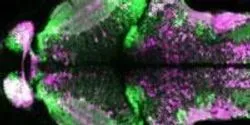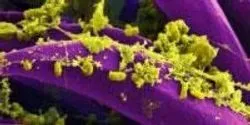Biological Sciences

The University of Dundee is to lead a major project to help tackle one of four key biosciences `big data’ challenges identified by the UK’s Biotechnology and Biological Sciences Research Council.

A specialist x-ray machine used by Northampton General Hospital for the treatment of skin cancer has been upgraded thank to collaboration with the Open University.

The first comprehensive computer model to simulate the development of blood cells could help in the development of new treatments for leukaemia and lymphoma, say researchers at the University of Cambridge and Microsoft Research.

Technique could allow study of viral infections, cell division and photosynthesis in new detail.

Problem: The human genome encodes thousands of secreted proteins, each of which is an actor in
the delicate biochemical balance of diagnostics. Even a slight change in any one of these proteins can
mean the difference between sickness and health. Such a change also provides a critical window into
the body and helps to direct diagnosis and treatment, however, the vast majority of secreted proteins
are present in concentrations well below what conventional technologies can measure, and their role in
human health is poorly understood.

Abstract: Persistent organic pollutants (POPs) can cause long term damage to the environment. Two classes of organic molecules have come to the attention of regulators and water treatment authorities in recent years; iodinated X-Ray contrast media (XCM) and artificial sweeteners (AS). These molecules, by design, have a high degree of stability. Aware of the increased abundance of these molecules in waste water, the IWB Water Laboratory set out to develop a robust, simple method to analyse levels of these molecules in water from the river Rhine, ground water and drinking water.

Like great athletes and musicians, cells employed in cell-based assays or as expression systems for biopharmaceutical production are not born, but made. Cell lines that perform specifically and predictably arise from a population of cells that have undergone one or more genetic transformations (transfection) and are subsequently selected for desirable properties such as viability, protein or virus production; high culture density; or binding to drugs or antigens.

A Washington University in St. Louis drug discovery program has received three grants totaling more than $5 million from the National Institutes of Health (NIH) to develop new therapeutics for respiratory diseases. The target illnesses range from the common cold to life-threatening lung disease.













